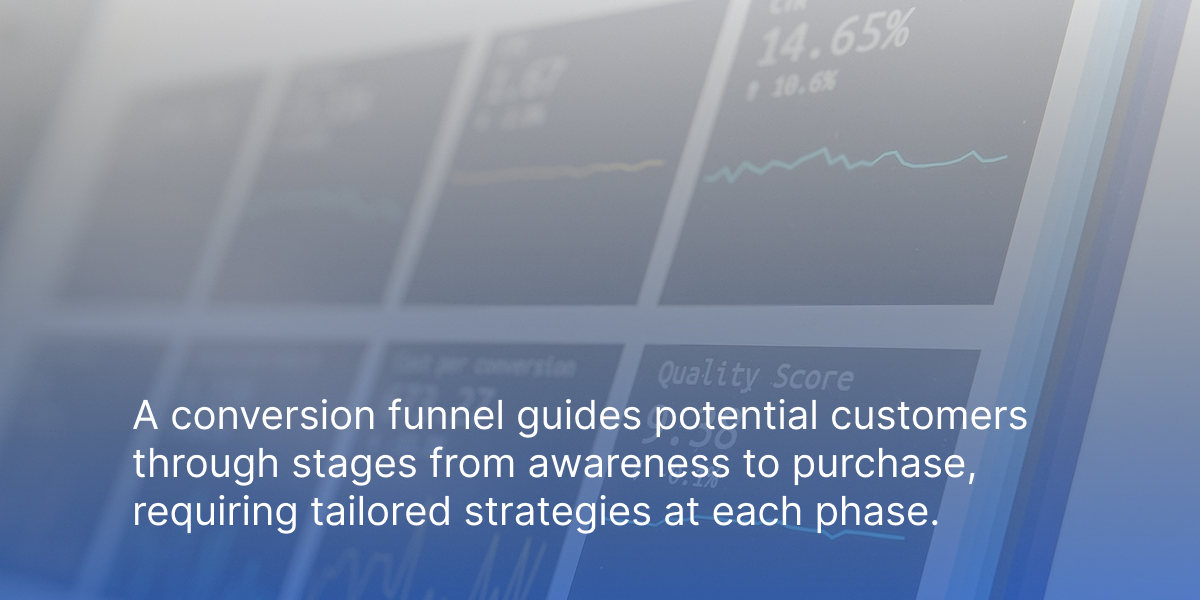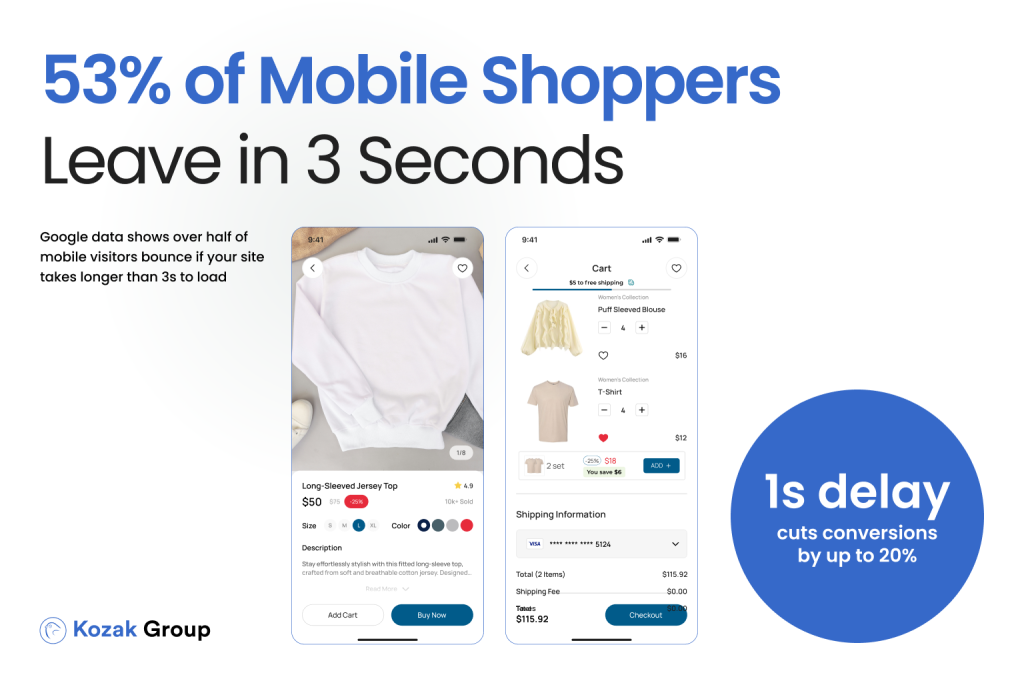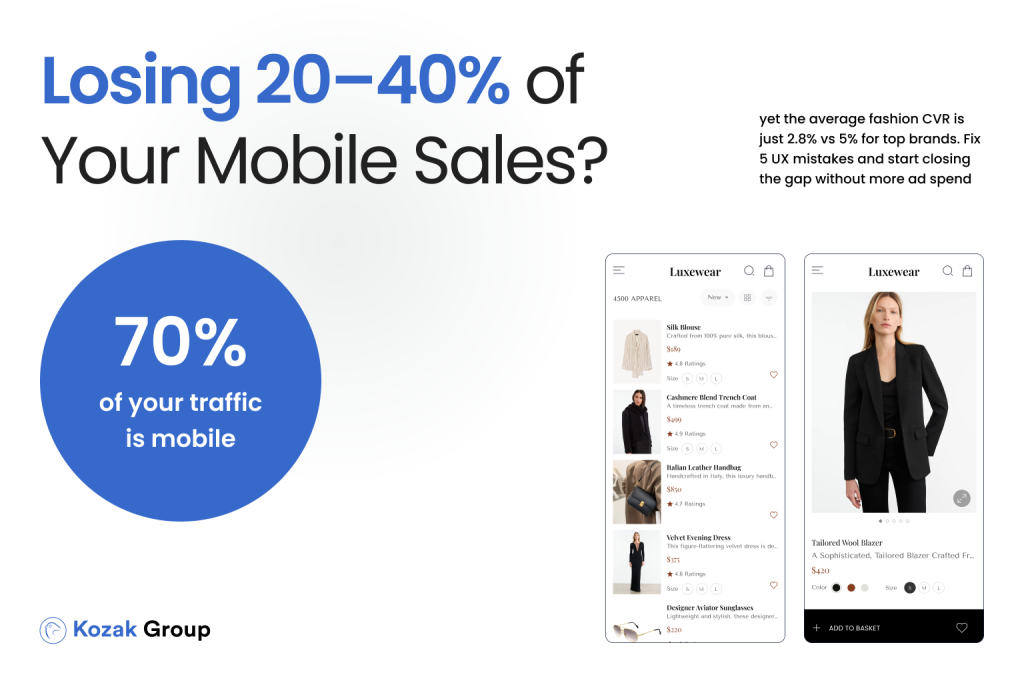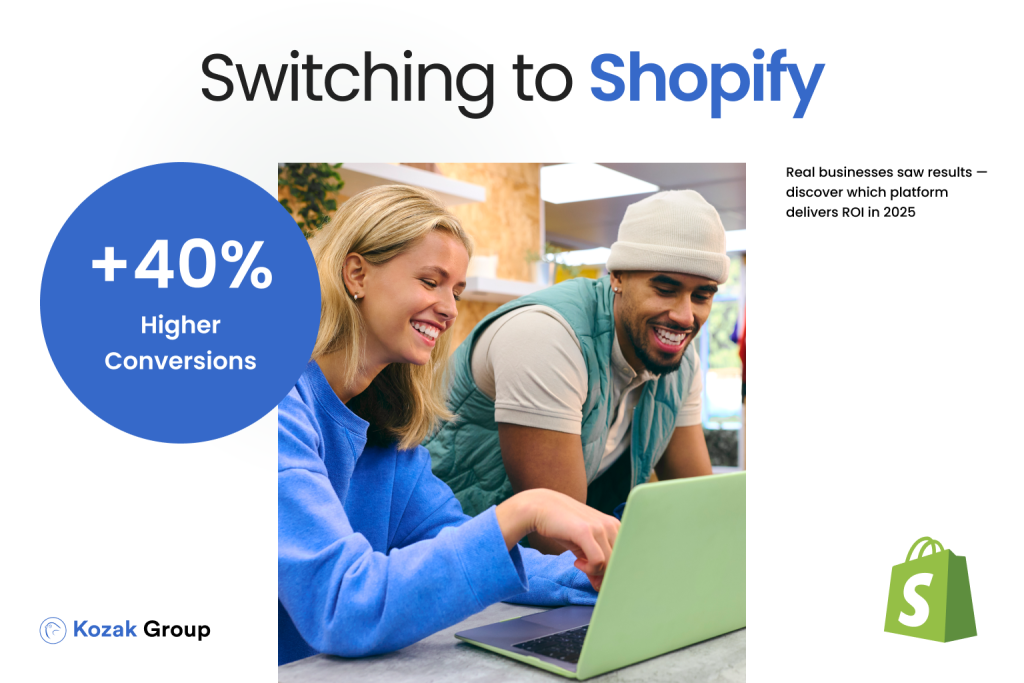A company’s conversion funnel represents the steps potential customers follow from first learning about your product to making a purchase. By optimizing each stage of this funnel, you can significantly increase conversions and sales. In this article, we will explore strategies for each stage of the conversion funnel, helping you attract interest, nurture leads, and boost customer retention.
Key Takeaways
- A conversion funnel guides customers from awareness to purchase, consisting of stages: Awareness, Interest, Desire, Action, and Retention, necessitating tailored marketing strategies at each phase.
- Optimizing the conversion funnel is critical for increasing sales and revenue, improving user experience, and addressing issues that lead to drop-offs, with financial benefits highlighted by successful case studies. Enhancing the conversion funnel’s effectiveness can significantly impact the overall performance of your landing pages and sales.
- Continuous improvement through A/B testing and user feedback is essential for adapting the conversion funnel to user behavior, ensuring effectiveness and boosting conversion rates.
Introduction to Conversion Funnels
Understanding the Basics of a Conversion Funnel
A sales funnel represents a systematic method of leading potential customers through the stages of making a purchase, beginning with their first encounter with the product or service and ending in an actual sale. It is often heralded as a vital component of any marketing strategy and forms the core structure for both marketing strategies and sales processes. The main objective behind crafting such a funnel is to shepherd potential customers from one phase to another, thereby boosting conversion rates and fostering long-term customer loyalty.
Effective business models should integrate the conversion funnel into a comprehensive strategy that encompasses the entire customer journey, rather than viewing it as a standalone process.
To effectively craft marketing efforts, it’s essential to comprehend how individuals navigate through the various phases of the funnel. A well-optimized conversion funnel provides a clear depiction of how prospective buyers go from being aware of your offering all the way to becoming paying customers. Typically encompassing stages like awareness, consideration, and decision-making (conversion), this journey necessitates distinct marketing strategies designed specifically for each stage in order to propel prospects towards completing their purchases.
Conversion Funnel vs. Customer Journey
Though often confused for one another, “conversion funnels” and the “customer journey” convey distinct ideas. The latter is an all-encompassing term that details every point of contact between a customer and a brand, starting from when they first become aware of it to the development of enduring loyalty. Conversely, conversion funnels specifically hone in on the pathway towards making a purchase – a process marked by its directness and structured progression.
Customer journey maps are detailed visualizations that outline the unique paths individual buyers take from discovering a brand to making a purchase. They emphasize the importance of understanding these distinct journeys to enhance customer engagement, optimize marketing strategies, and improve sales conversion rates by tailoring approaches to meet the specific needs and behaviors of different customer segments.
Recognizing both concepts – the conversion funnel with its emphasis on transactional stages and the customer journey highlighting overall interaction – is instrumental for businesses aiming to polish each touchpoint across various phases, paving the way for fluid movement through successive stages. This comprehensive insight also aids in circumventing potential constraints posed by conversion funnels due to their sometimes misalignment with broader aspects of customer experience.
Indeed, while conversion funnels present as uniform models applied broadly across markets or audience segments, individual customer journeys tend to be more personal and winding paths reflective of diverse behavioral patterns inherent among different customers.
Key Stages of a Conversion Funnel
The conversion funnel includes several critical phases: Awareness, Interest, Desire, Action, and Retention. Each phase is integral in nudging potential customers toward completing a purchase. At the awareness stage, prospective customers discover products that might meet their needs, which piques their interest in the brand and begins to cultivate brand loyalty. This initial stage is vital for attracting customer attention early on during the various stages of the conversion.
During the interest phase, individuals are gathering more details about what’s being offered by engaging with the company to heighten their curiosity and trust. The desire phase aims at persuading prospective buyers into actual purchasers by fine-tuning their preferences for specific offerings throughout these different stages. Eventually comes action – where decisions become concrete purchases signaling an end-point in this journey as potential clients make transactions.
Retention holds equal weight within this framework. It fosters repeat business while cementing customer fidelity through tailored communications such as personalized appreciation emails along with helpful information or exclusive perks. Recognizing each of these facets and its importance allows for a finely tuned conversion funnel that not only secures additional conversions but enhances rates of customer retention too.
Understanding Your Target Audience
Understanding your target audience is crucial for creating an effective conversion funnel. The target audience is the specific group of people that a company aims to reach with its marketing efforts. To gain a deep understanding of this audience, companies need to conduct thorough market research and gather data on demographics, interests, and behaviors.
One effective way to understand the target audience is by creating buyer personas. These are fictional representations of ideal customers based on detailed market research and real data. Buyer personas help companies tailor their marketing efforts to the specific needs and preferences of their target audience, ensuring that their messages resonate and drive engagement.
The target audience plays a key role in determining the effectiveness of a conversion funnel. Companies need to continuously monitor and update their understanding of the target audience to ensure that their marketing efforts remain relevant and effective. This ongoing process involves analyzing customer feedback, tracking user behavior, and staying informed about market trends.
By understanding the target audience, companies can create a successful conversion funnel that drives conversions and revenue. This involves crafting personalized marketing messages, addressing user pain points, and delivering content that aligns with the interests and needs of potential customers. Ultimately, a deep understanding of the target audience is essential for optimizing the conversion funnel and achieving business goals.
Building an Effective Conversion Funnel
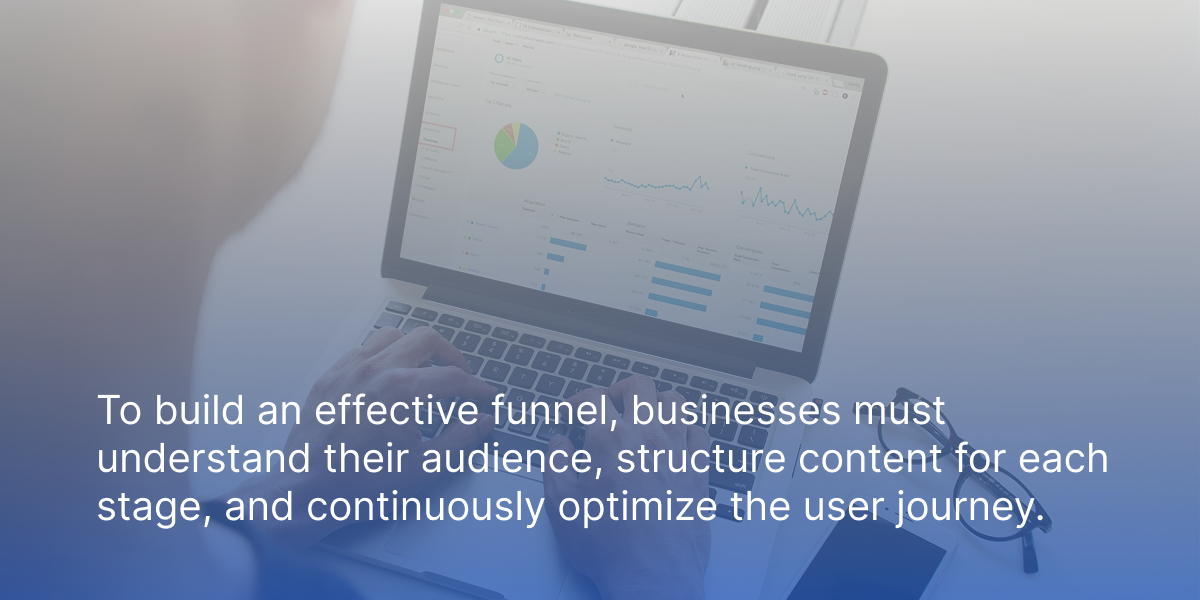
At each stage of the funnel, companies need to create content and marketing messages that resonate with their target audience and address their specific pain points. This involves crafting engaging blog posts, informative videos, and compelling social media content that captures the attention of potential customers and encourages them to move further down the funnel.
Optimizing the conversion funnel for conversion rates is crucial. This means focusing on reducing friction and improving the user experience at every touchpoint. Companies should continuously monitor and analyze the performance of their conversion funnel, using data and analytics to identify areas for improvement. This might involve A/B testing different elements, refining landing pages, and streamlining the checkout process.
The conversion funnel should also be aligned with the company’s overall marketing strategy and goals. This ensures that all marketing efforts are cohesive and work together to drive conversions. Building an effective conversion funnel is an ongoing process that requires continuous effort and optimization. By staying attuned to the needs of the target audience and making data-driven adjustments, companies can create a conversion funnel that effectively drives conversions and boosts revenue.
The Importance of Optimizing Your Conversion Funnel
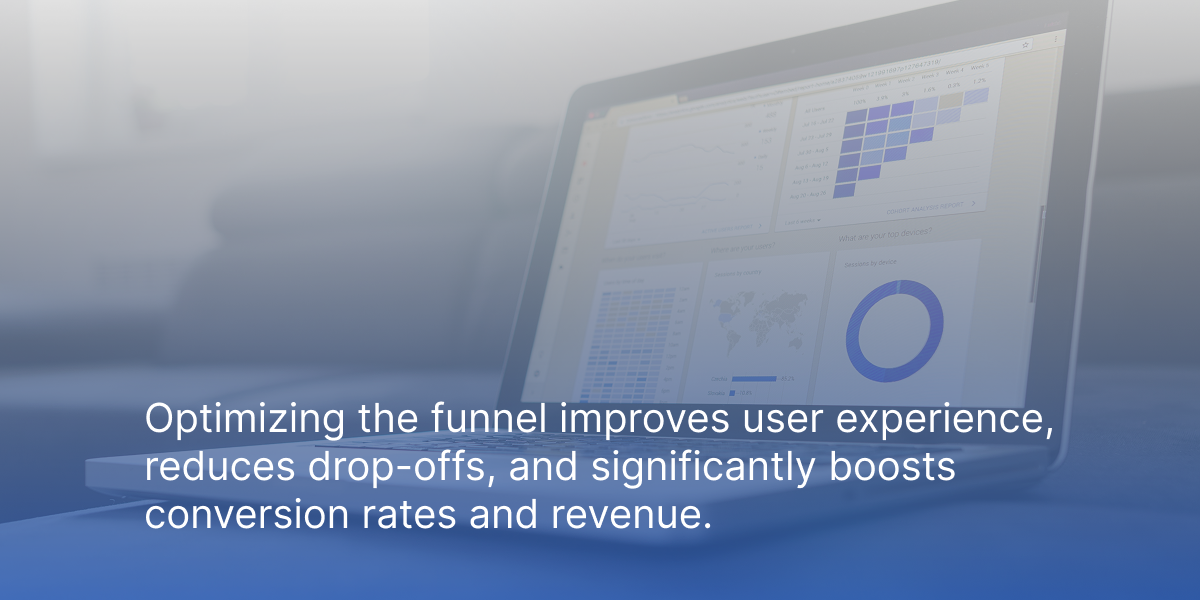
The monetary advantages derived from refining a conversion funnel are substantial. Consider these examples:
- Through targeted optimization tactics in converting leads, Limango was able to cut down its cost per lead by 20%.
- Witt-Gruppe experienced an impressive reduction in online marketing expenditures by 90%.
- Digital Reach saw their investment pay off twelve times over upon honing their conversion mechanisms.
Such instances underscore how critical optimizing every stage of the conversion process is to enhance marketing efficiency and escalate profit margins effectively.
Benefits of Optimization
Significantly better customer experiences result from a conversion funnel that is well optimized, which in turn increases the likelihood of converting leads into customers. Efforts to optimize your conversion funnel by improving initial interactions with the brand and lowering bounce rates can substantially enhance user engagement. These optimization efforts can decrease customer acquisition costs by more efficiently utilizing marketing resources according to where leads originate.
For example, tailored messaging has shown to potentially yield a return on investment up to 120 times greater than generic approaches, highlighting its substantial influence on improving conversion rates. The hallmark of an effective and successful conversion funnel is observed through elevated conversion rate figures at its lower stages, culminating in heightened sales and overall revenue growth.
Consequently, dedicating time and resources towards optimizing the conversion funnel provides crucial insights as well as concrete benefits in terms of key performance indicators and performance outcomes.
Common Challenges in Funnel Optimization
Optimizing a conversion funnel is not without its difficulties. A lack of alignment between the sales and marketing team can create barriers in effective communication, resulting in inconsistent messaging and lost opportunities to engage potential customers. To combat this issue, setting clear objectives, defining individual roles, and implementing consistent feedback mechanisms are vital for fostering better teamwork.
Additional challenges such as slow website performance contribute to approximately 18% of visitors abandoning their visit before interacting with the site content, which negatively impacts conversion rates. Identifying misaligned target audiences or providing irrelevant content also diminishes conversions. Conducting regular tests on website speed, improving product descriptions for greater engagement, and refining various components of landing pages are critical actions necessary to surmount these hurdles by ensuring a more dynamic interaction with the audience.
Conducting thorough market research allows an understanding of customer pain points that translates into strategic changes implemented progressively over time. This approach provides valuable insights that enhance funnel optimization efforts focused on addressing user issues effectively.
Strategies for Top of the Funnel (TOFU) Optimization

To optimize top-of-the-funnel marketing effectiveness, employing methods such as producing relevant content, investing in paid advertisements, and focusing on search engine optimization (SEO) can significantly boost a brand’s presence. Assessing which channels yield customer acquisitions and applying varied marketing approaches, including efforts to create blog posts, improves efforts to connect with audiences while amplifying brand recognition.
Creating Engaging Content
Crafting content that appeals to the unique perspectives and requirements of potential customers is crucial, as it helps create brand value and aligns with their specific stages within the purchasing funnel. At its initial stage – often referred to as the top of the funnel – it’s particularly important to generate captivating content forms like blog posts and infographics that provide answers and stimulate curiosity. This type of engaging content should tap into the interests and necessities of prospective clients, fostering engagement while building trust. To truly capture your audience’s attention, you must craft blog posts tailored to meet their particular needs.
Employing lead magnets such as e-books or access to exclusive material can serve as an effective method for drawing in potential customers through various marketing channels. By implementing this approach, not only does it aid in amplifying brand recognition but also propels qualified leads. Along their customer journey by encouraging them toward taking subsequent actions.
Leveraging Social Media Marketing
Brands can efficiently reach particular audiences through the strategic use of social media platforms. The implementation of paid social advertisements has the potential to expand brand recognition by exposing it to new prospective customers, making these platforms critical for improving visibility and fostering connections with those who may be interested in their offerings.
Leveraging social media marketing appropriately is crucial for a brand’s success in drawing attention and interaction from prospective clients. Businesses that produce engaging content and execute targeted campaigns are likely to enhance their digital marketing strategies, resulting in increased visitor flow toward their conversion funnels. Additionally, incorporating other elements such as influencer partnerships and optimized landing pages can further maximize conversion rates.
Enhancing Middle of the Funnel (MOFU) Engagement

To effectively engage at this stage of the MOFU, strategies should focus on attracting visitors, crafting tailored experiences, and encouraging purchases. Utilizing product reviews and comparisons can assist leads in assessing their options during the consideration stage, steering them through various available offerings.
Personalizing Marketing Messages
Tailoring marketing messages to create desire and cater to the unique needs and preferences of individual customers can significantly improve personalization. Personalized calls-to-action (CTAs) have been found to outperform their generic counterparts, leading to increased engagement and conversion rates. Establishing social proof with customer testimonials is an effective way of bolstering trust among potential customers.
Employing customer avatars or buyer personas enables marketers to craft content that strikes a chord with distinct audience segments. By ensuring relevance in these targeted communications, such an approach not only appeals more directly but also propels both ideal and potential customers. Along the path toward completing a purchase transaction.
Utilizing Email Marketing Campaigns
Engaging potential customers throughout their purchasing journey is crucial, and targeted email campaigns play a pivotal role in guiding users towards the desired action. By personalizing the content based on recipient interests and behaviors, these campaigns enhance engagement levels, fostering lead nurturing that propels them deeper into the sales funnel.
As an effective strategy for maintaining consistent interaction with prospective buyers, targeted email marketing efforts are instrumental in elevating both lead generation and conversion rates. This approach effectively draws leads closer to the point of purchase by offering continuous relevance and connection via tailored communication.
Bottom of the Funnel (BOFU) Tactics for Conversion
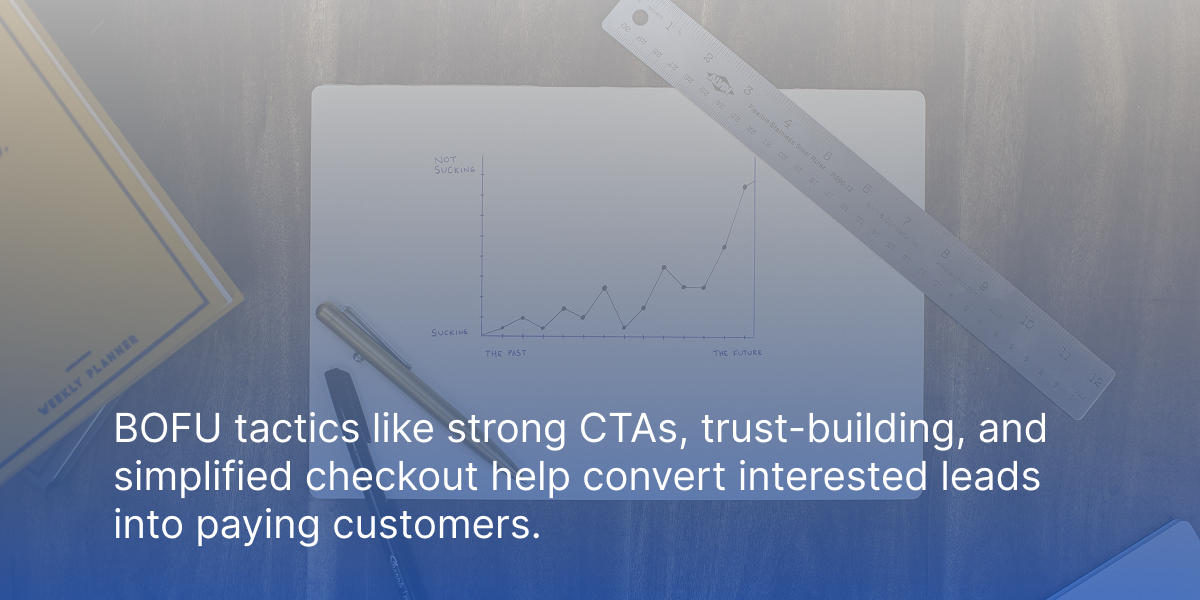
As potential buyers approach the end-stage of the conversion funnel, obstacles in checkout procedures may cause them to abandon their transactions. To avoid this pitfall, it’s imperative to foster trust with your clientele and streamline the checkout experience, facilitating an effortless progression from expressing interest in a product or service to finalizing their acquisition.
Crafting Compelling Calls to Action (CTAs)
Call to actions (CTAs) are designed to transform potential customers into active participants by guiding them from the desire stage toward taking a specific action within a marketing funnel, ultimately optimizing the conversion funnel leads. Their fundamental role is to prompt users towards engaging behaviors, like subscribing to newsletters or soliciting product demonstrations, through persuasive language and clear directives.
To ensure effectiveness, it’s essential that CTAs stand out visually and align closely with the content they’re associated with. To compel prospective customers as well as brand advocates more effectively, infusing a sense of urgency in your CTAs can act as a powerful catalyst for swift responses.
Simplifying the Checkout Process
Minimizing barriers within the checkout procedure is crucial to avoid discouraging happy customers from finalizing their transactions. Frequent problems contributing to shoppers leaving their carts are extensive paperwork, unforeseen expenses, and complex website routes. Making the checkout process more efficient can lead to a noticeable drop in cart abandonment.
Enhancing the simplicity of checking out not only improves the overall experience for users, but also notably increases conversion rates. Facilitating an effortless and clear-cut path through the checkout phase is essential in transforming prospective clients into paying customers.
Analyzing and Measuring Funnel Performance
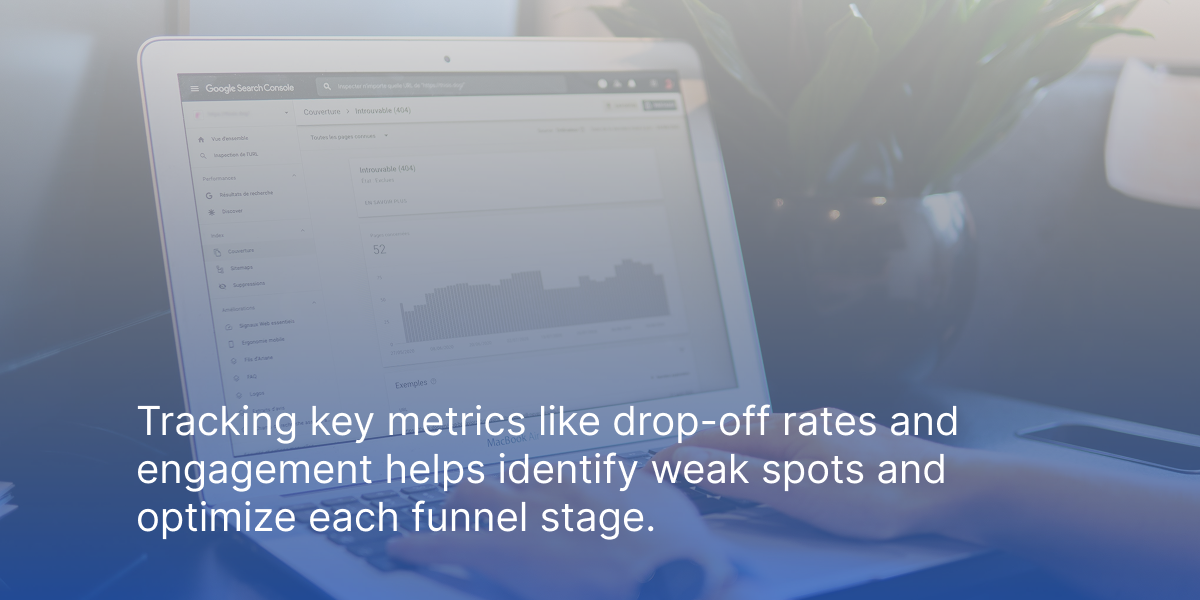
To accurately assess a brand’s conversion rate, metrics should be tracked over a minimum period of three months. For more timely insights into their performance, brands ought to review their conversion funnels on a monthly basis or sooner. Taking user feedback into account is instrumental in uncovering significant issues with the customer experience that require attention.
Important Metrics to Monitor
Essential metrics for evaluating the efficacy of a conversion funnel include the conversion rate, average order value, and customer lifetime value. Engagement indicators like session length, bounce rate, and click-through conversion rates are crucial KPIs to observe as they demonstrate how users engage with the funnel. Analyzing where users exit from the funnel offers valuable insight into aspects that require enhancement.
Keeping an eye on these statistics allows companies to pinpoint which segments of their sales process are successful and which ones necessitate fine-tuning. Concentrating on these pivotal performance indicators enables organizations to employ information-based strategies in improving their conversion funnels’ efficiency.
Tools for Funnel Analysis
It is crucial to adopt a structured method when evaluating the effectiveness of conversion funnels. To enhance a conversion funnel, it’s advisable to utilize an advanced web analytics platform with capabilities for optimization. Fullstory contributes to this by monitoring user actions, examining visited URLs, and supplying numeric data regarding conversions.
Using Matomo’s heatmaps can aid in scrutinizing how visitors interact with landing pages, thus delivering visual data on user behavior. By leveraging appropriate instruments, companies can pinpoint where enhancements are needed and efficiently refine their conversion funnels.
Continuous Improvement and A/B Testing
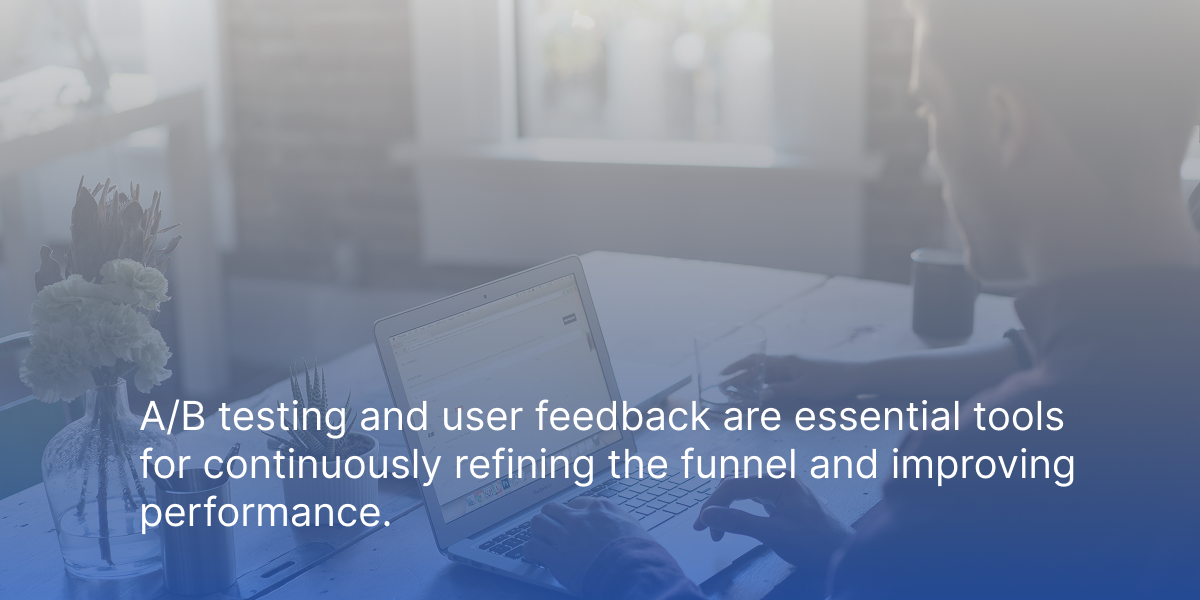
Integrating feedback from users into this optimization cycle offers significant understanding into audience preferences and aversions. Through perpetual experimentation and enhancement of your funnel, you are able to improve the overall experience for customers on their journey, leading to more successful outcomes.
Conducting A/B Tests
A/B testing is instrumental in enabling decisions backed by data, which enhance user interaction and boost conversion rates by analyzing the behavior of website visitors. This form of testing can encompass a variety of modifications from minor tweaks such as altering the hue of buttons to major overhauls like comprehensive page redesigns. Prior to executing A/B tests, it’s crucial to establish clear objectives and metrics for gauging their success accurately, incorporating the b test.
Through methodical evaluations between alternate variants, companies are able to pinpoint the most potent components within their marketing strategies. Such methodology aids in refining the conversion funnel while promoting ongoing enhancement.
Implementing User Feedback
Satisfied customers are crucial for optimizing the conversion funnel, as their feedback can result in solutions that are more closely aligned with customer requirements. It allows businesses to identify and focus on particular segments of the funnel where customers may face obstacles. Rectifying these issues not only improves the customer experience but also boosts conversion rates.
When optimization is guided by actual user insights, it guarantees that changes made to the conversion funnel resonate with users’ needs, making it both efficient and conducive to a better user experience.
Case Studies of Successful Conversion Funnels
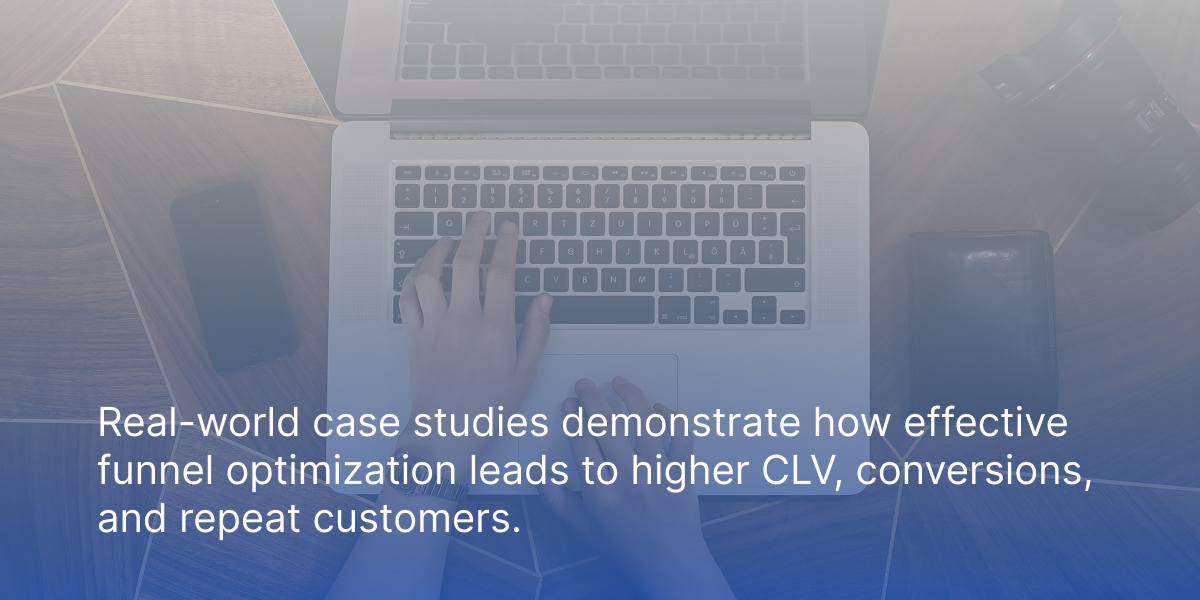
These specific examples underscore how essential an effectively optimized conversion funnel is to realize business objectives and generate repeat customers. They showcase instances where companies have adeptly dealt with the complexities of optimizing their funnels and achieved remarkable outcomes. As such, they provide practical guidance for others seeking improvement, including detailed revelations about those companies’ approaches to managing their conversion pathways.
Summary
To summarize, the enhancement of your sales funnels is crucial for elevating sales and enriching the customer journey. Grasping the fundamental steps within a conversion funnel, applying impactful tactics at every phase, and persistently examining and enhancing your approach can lead to an effective conversion funnel that yields increased conversions and boosts income.
Embarking on the path toward conversion funnel optimization might present difficulties. Its benefits justify the endeavor. Adhering to these prescribed methods will enable you to develop a finely tuned conversion funnel that not only captivates potential customers but also transforms them into dedicated repeat patrons.



